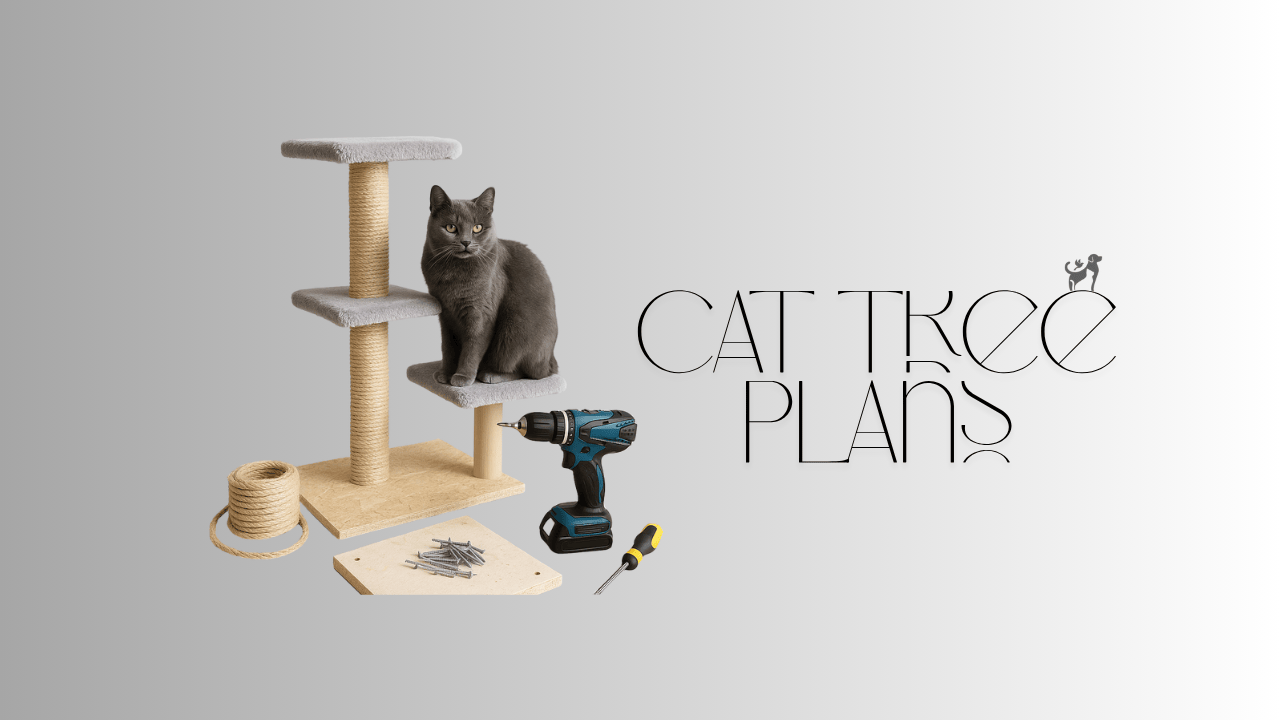Creating your own cat tree at home is one of the most rewarding DIY projects a cat parent can take on. Not only do you get to personalize it to match your space and your cat’s preferences, but you can also save a lot of money compared to store-bought models. This guide shares everything you need to know about DIY cat tree plans—from choosing materials and design ideas to real-world building tips.

Why Build a DIY Cat Tree?
Most pet owners don’t realize that cats need vertical territory just as much as dogs need walks. Vertical spaces offer enrichment, exercise, and stress relief—especially for indoor cats. Store-bought cat trees can be expensive, bulky, or made of materials that don’t last. DIY projects let you:
- Customize the size and shape for your home
- Use eco-friendly or recycled materials
- Add personal touches like colors, fabric, or themed decor
- Save money while bonding with your pet through the build process
At Fluffze.com, we believe in practical pet solutions—and this one checks all the boxes.
Essential Materials and Tools for DIY cat tree plans
Before diving into the actual plans, gather your materials. Here’s what you’ll likely need for most DIY cat trees:
Tools
- Drill with bits
- Screwdriver
- Staple gun
- Measuring tape
- Saw (hand or circular)
- Level
- Pencil
Materials
- Plywood or MDF boards for platforms
- PVC pipe or wooden dowels for support posts
- Sisal rope for scratching posts
- Carpet remnants or fleece fabric for covering
- Wood screws or brackets for joining pieces
- L-brackets for stability
Optional add-ons: fake leaves, paint, jute, carpet tiles, wall anchors, baskets, or hammocks.
Pro Tip: Visit your local hardware store or check Facebook Marketplace for leftover building supplies. You might find free carpet pieces or cheap wood cuts that work perfectly.
Step-by-Step DIY Cat Tree Plans
Plan 1: Simple Wall-Mounted Cat Perch about DIY cat tree plans
Best for: Small apartments or single-cat homes
What you need:
- 2–3 wood planks (12–18 inches wide)
- Wall anchors + L-brackets
- Non-slip mat or carpet
Instructions:
- Find a wall with good vertical height but no fragile decor.
- Measure and mount the L-brackets using anchors.
- Attach wooden shelves securely.
- Cover the top with carpet using a staple gun.
- Optional: Add a sisal-wrapped post from floor to first perch for climbing.
Why it works: It’s minimal, space-saving, and keeps your cat engaged with multiple levels to jump between.
Plan 2: Multi-Level Floor Cat Tree
Best for: Multi-cat households or energetic kittens
Materials:
- Plywood base (24″x24″)
- 2–3 support posts (2–3 ft tall)
- Multiple platforms (round or square)
- Sisal rope, carpet, screws
Instructions:
- Start with a wide base to prevent tipping.
- Secure vertical posts with brackets and wood screws.
- Wrap posts in sisal rope for scratching.
- Add staggered platforms at various heights.
- Top it off with a cozy bed or hammock.
Customization ideas: Add toy attachments, tunnel sections, or even LED lights for flair.
Plan 3: Modern Tree with Hidden Cubes
Best for: Design-focused homes or shy cats
Materials:
- MDF sheets
- Hinges and handles
- Paint or wood stain
- Cushions or memory foam pads
Steps:
- Build 2–3 cube boxes (open front or cut out circles).
- Stack securely using screws or glue.
- Install hidden hinges for storage inside.
- Paint to match your home aesthetic.
- Line each cube with soft padding.
Why it works: Offers hiding spots and looks sleek enough to pass as furniture.
Real Owner Tips: What I Learned Building for My Cat
When I built a DIY cat tree for my rescue cat, Luna, I quickly realized a few things:
- She didn’t care about how pretty it looked—she wanted height and texture.
- I had to anchor it to the wall because she nearly toppled it chasing her tail.
- Carpet scraps are her favorite—especially the rougher ones. Soft fleece? Not so much.
Most cat owners focus on toys or beds, but vertical play areas are game-changers. Once Luna had her tree, she spent less time clawing the couch and more time chilling by the window.
Safety Tips & Common Mistakes
Even the best designs can go wrong without a few safety checks:
Do:
- Use non-toxic glues and paints
- Sand wood edges to prevent splinters
- Double-check for wobble or instability
- Wrap rope tightly and evenly
Don’t:
- Use old, treated lumber (may contain chemicals)
- Skip wall mounting if tree is tall
- Forget to vacuum before your cat explores (loose staples = danger)
Always observe your cat the first few days to ensure they’re using it safely and happily.
FAQs About DIY Cat Trees
1. Are DIY cat trees safe?
Yes—when built with secure joints, sturdy materials, and pet-safe finishes. Avoid shortcuts with fasteners or thin wood.
2. How tall should my cat tree be?
It depends on your cat. Most cats enjoy perches 3–6 feet high. Senior cats may prefer shorter, easy-access platforms.
3. Can I use cardboard tubes instead of wood?
You can, but they may not support adult cat weight long-term. Reinforce with internal supports or only use them on low sections.
4. Is sisal rope better than carpet?
Both work well, but sisal is more durable for scratching. Carpet offers softness. Many cat owners combine both.
5. Do I need to anchor it to the wall?
If your tree is taller than 3 feet or you have active cats, yes—it prevents tipping and injury.
Final Thoughts & Next Steps
Building a DIY cat tree is more than a weekend project—it’s an investment in your cat’s happiness and your home’s harmony. Whether you choose a wall-mounted perch or a multi-level tower, the key is function over flair. Your cat wants to climb, scratch, nap, and observe—and now they can do it all safely.
Want more practical tips for a happier cat? Check out Petmd.com for guides on cat food, training, and lifestyle ideas.
Written by Shawn, pet lover & contributor at Fluffze.
Related Articles:
Group Dog Training Classes vs Private Sessions
DIY Dog Shampoo: Safe Recipes & Tips
Smart Cat Dental Care at Home: Keep Your Cat’s Smile Healthy





